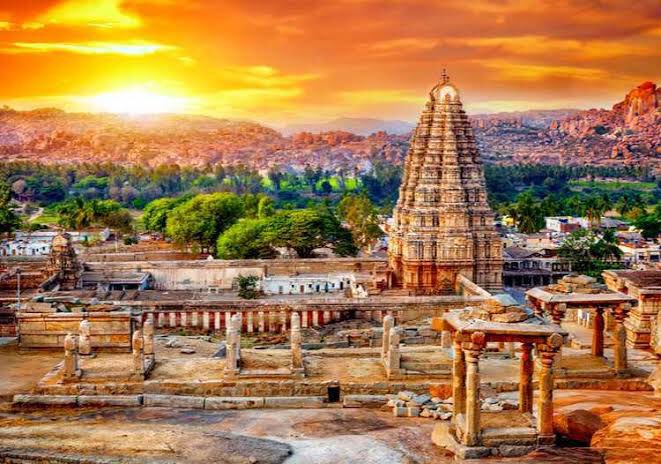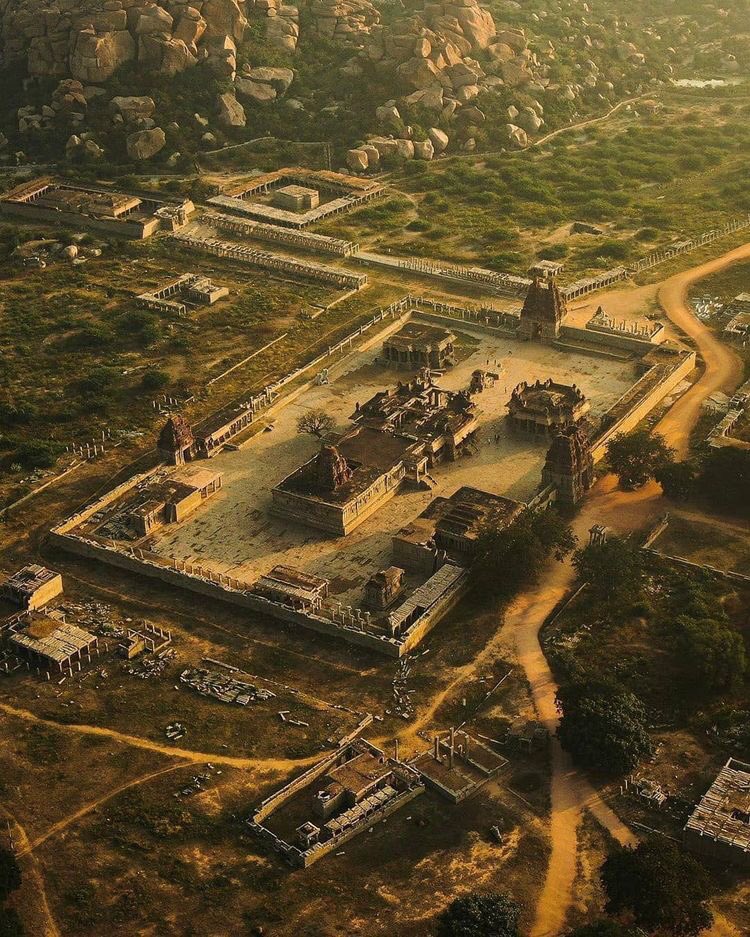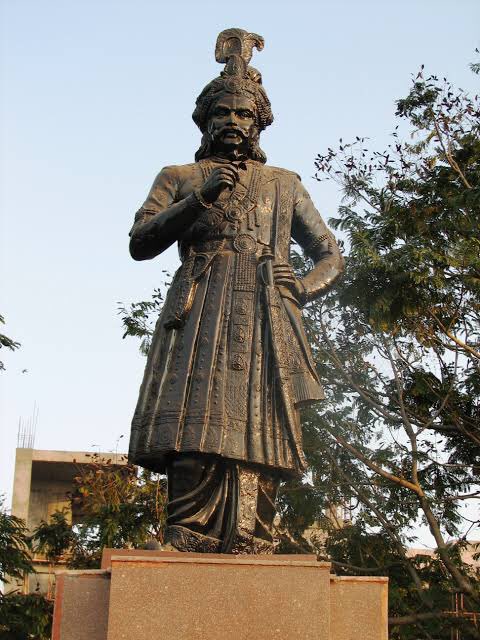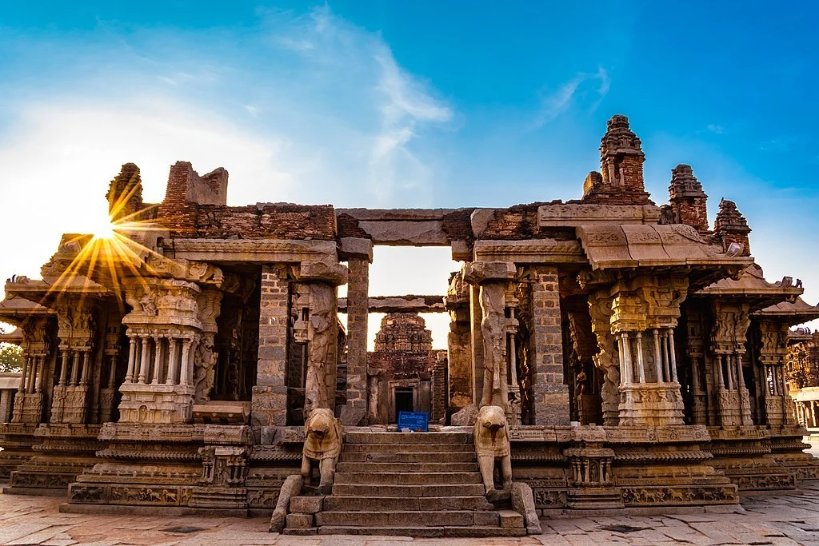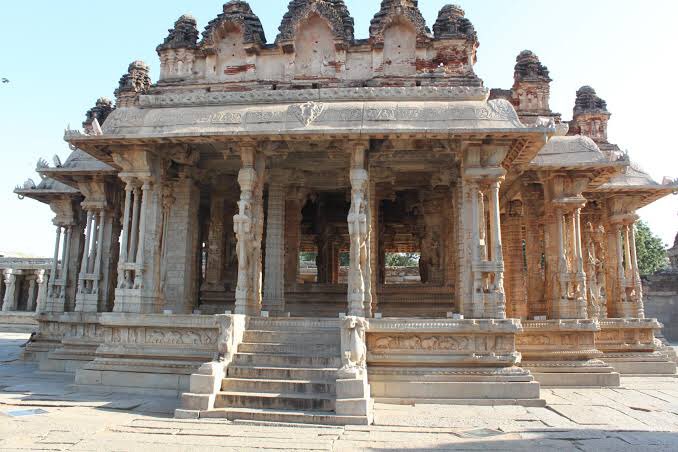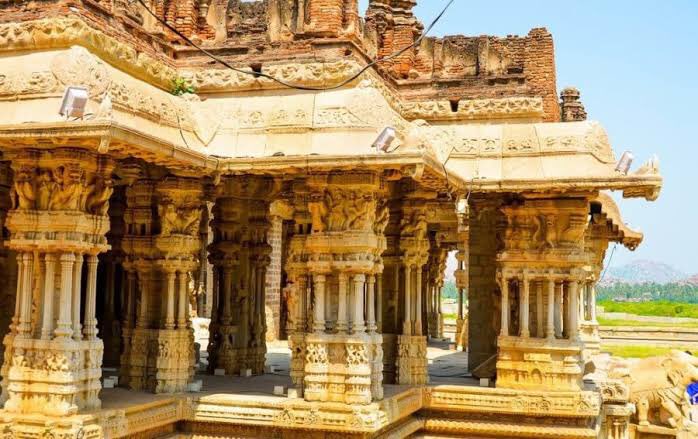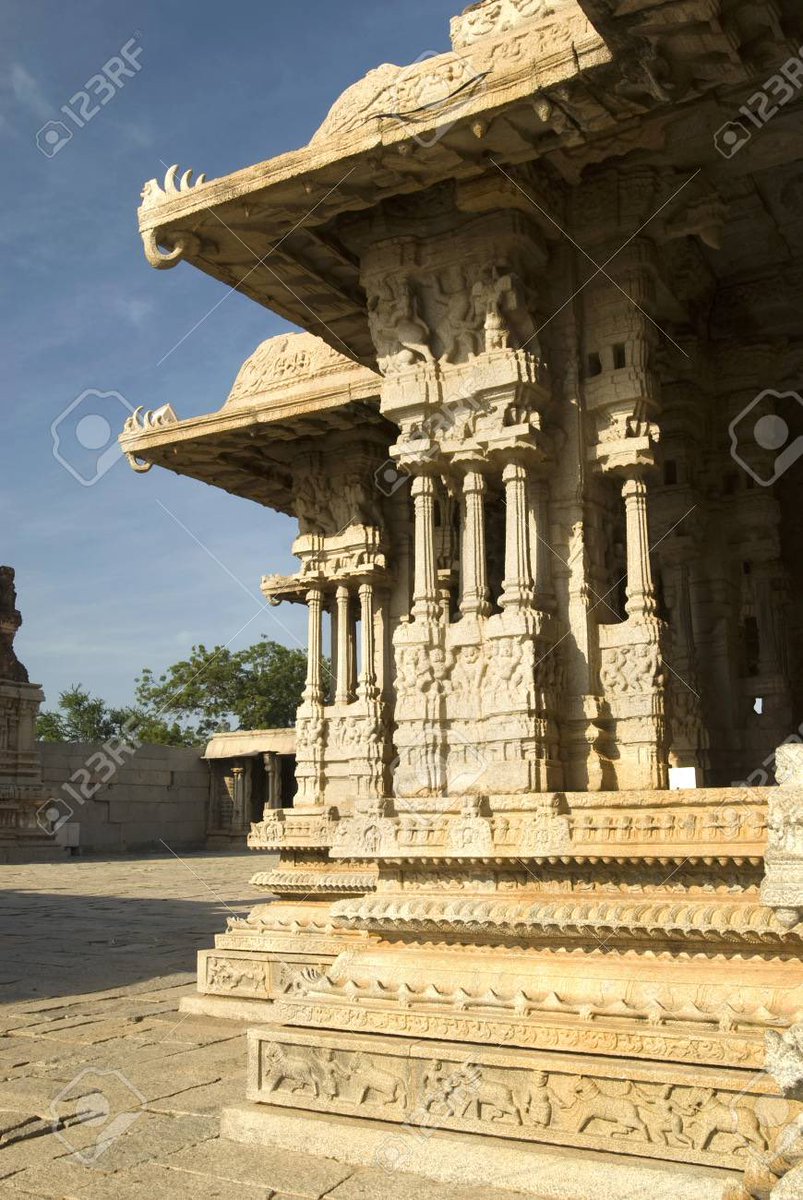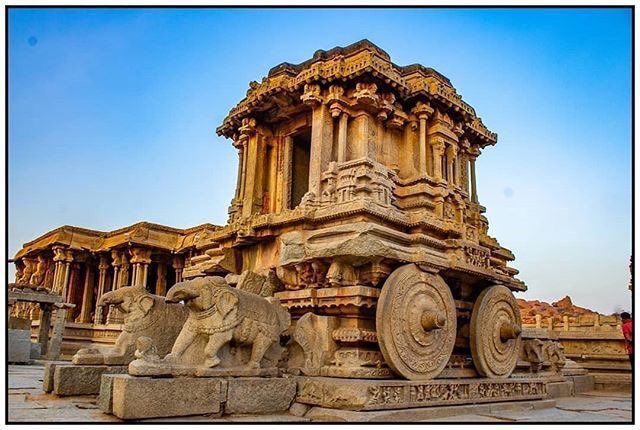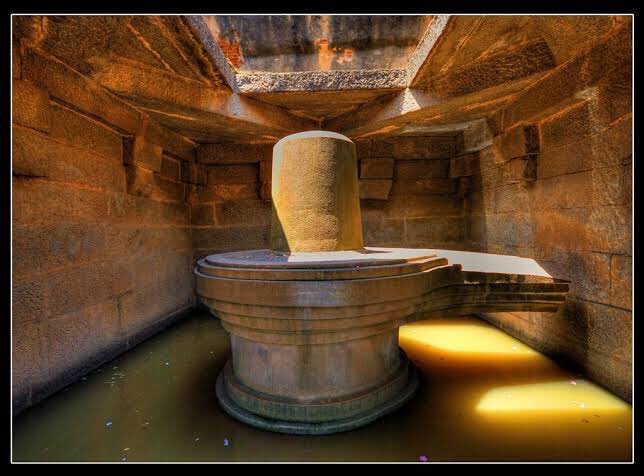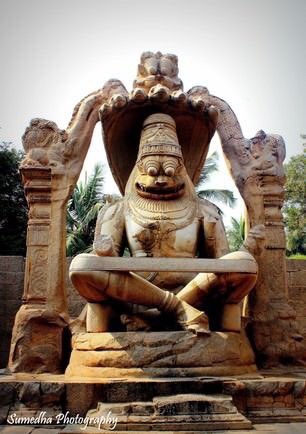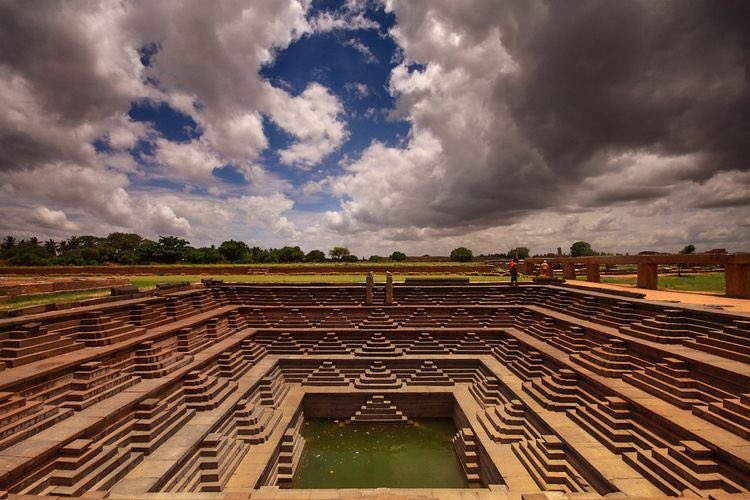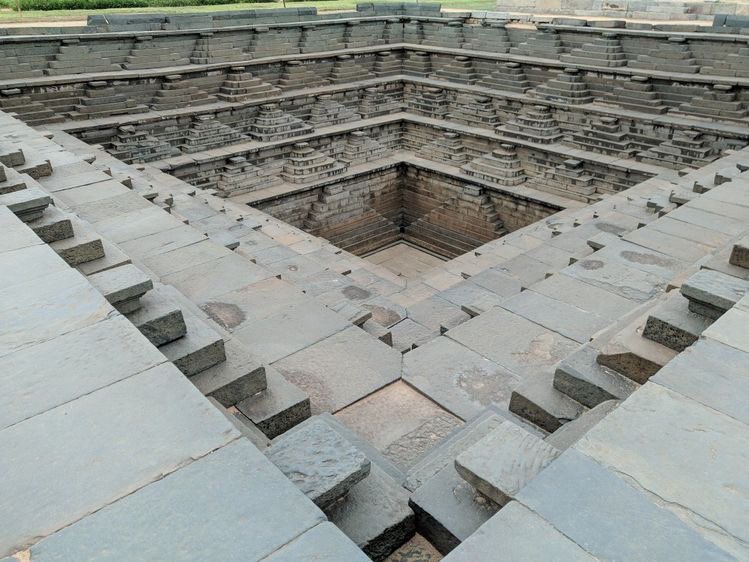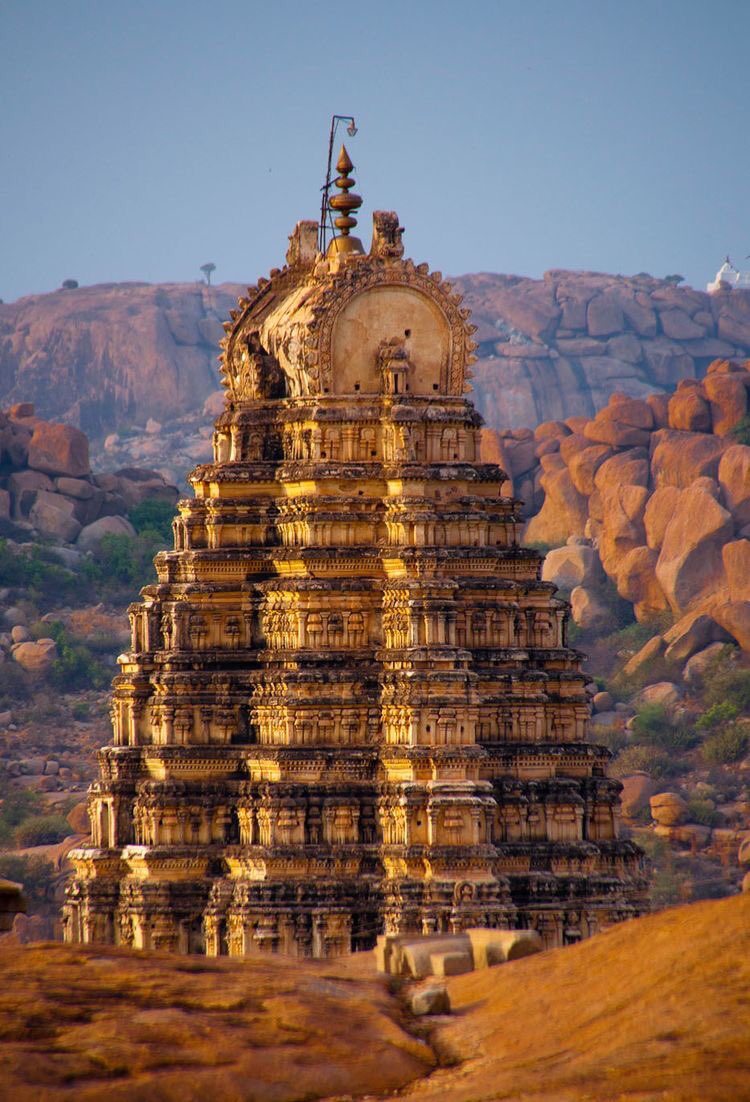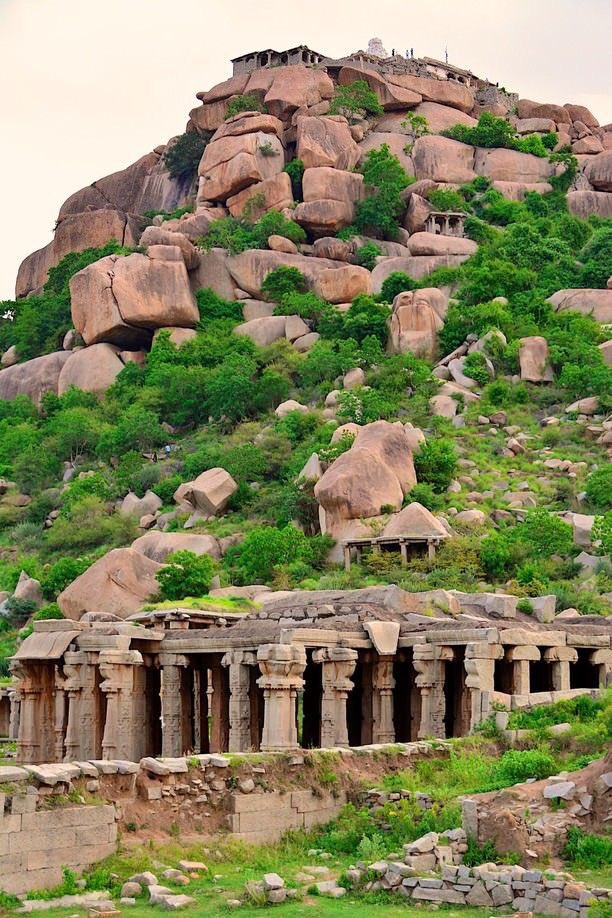#Thread on HAMPI
Hampi, a small village in Karnataka & according to the 2014 statistics, it is the most googled place of Karnataka. Although this village is already in ruins, but, it is still included in the UNESCO due to the extraordinary beauty of the temples & monuments.
Hampi, a small village in Karnataka & according to the 2014 statistics, it is the most googled place of Karnataka. Although this village is already in ruins, but, it is still included in the UNESCO due to the extraordinary beauty of the temples & monuments.
Hampi is built on the banks of the Tungabhadra River. Its name was derived from the river 'Pampa' (who was the daughter of Brahma). In the Ramayana, there’s a mention of the Kishkindha kingdom, which initially belonged to bali & then sughriva, is actually today's Hampi.
According to history, Hampi was built during the reign of King Dev rai 2 (1422 - 1446 AD), one of the rulers of the Vijayanagara Empire. Many temple were expanded & enlarged during the reign of Krishnadev rai (1509 - 1529 A.D.), the most famous ruler of the Vijayanagara dynasty.
Let's see, why Hampi can be your dream place-
1. Vitthal Temple - Also known as Sri Vijaya Vitthala Temple. It is dedicated to Lord Vitthal, an incarnation of Lord Vishnu. An idol of Vitthal-Vishnu is crowned in the temple.
@prahladspatel
1. Vitthal Temple - Also known as Sri Vijaya Vitthala Temple. It is dedicated to Lord Vitthal, an incarnation of Lord Vishnu. An idol of Vitthal-Vishnu is crowned in the temple.
@prahladspatel
The temple is built in the Dravidian style of architecture. The artistic carving & magnificent architecture is unmatched from any other structure found in Hampi.
The main attractions of the Vitthala temple are:
The main attractions of the Vitthala temple are:
1. Mahamandapa: The Mahamandapa or main hall of the Vitthal temple is in the inner courtyard of the temple complex. It is a composition of immense beauty. Its base is decorated with carvings of warriors, horses, swans and many other decorative designs.
The Mahamandapa consists of four small halls. The temple has forty pillars in the façade. The height of each of these pillars is 10 feet. There are 16 densely decorated pillars in the central part of the Mahamantap.
2. Stone Chariot: The Vitthal temple complex has a richly carved stone chariot, which is considered the most amazing architecture of the Vijayanagara Empire. The chariot stands in the courtyard of the temple. It is one of the 3 most famous stone chariots in India.
The other 2 chariots are in Konark (Odisha) & Mahabalipuram (Tamil Nadu). The chariot of the Vitthal temple is actually a temple designed in the shape of an ornamental chariot. The temple is dedicated to Garuda (the carrier of Lord Vishnu).
The govt. of India has honored this chariot by printing it on 50 rupees note.
Chariot wheels were once functional and could be rotated by people. But a few years back, the govt. cemented the wheels in order to preserve it.
Chariot wheels were once functional and could be rotated by people. But a few years back, the govt. cemented the wheels in order to preserve it.
3. Musical pillar of Rang Mandap: Rang Mandap is one of the main attractions of the Vitthal temple. The huge pavilion is famous for its 56 musical pillars. These musical pillars are also known as SAREGAMA columns, indicating the musical notes emitted from them.
When poles are tapped slowly, musical notes emerges. The emission of musical notes from stone pillars is a mystery that fascinated many people for centuries. Even the Britishers were surprised and wanted to discover the secret behind the pillars of music.
To satisfy their curiosity, and to unravel the mystery behind the marvelous pillars, they cut off the two musical pillars. However, nothing was found. Two pillars cut by the British rulers are still present inside the temple complex and can still be seen by visitors.
4. Barwalinga Temple: It is a 9 feet long temple situated near the Lakshmi Narasimha Temple. The Shiva Linga of the Barva Linga is made of beautiful black stone. Its height is of 3 meters. It is believed that the temple existed since the time of the Vijayanagara Empire.
The name Badwaling is a combination of two words - Badava and Linga. In the local language, Badava means poor and linga means the symbol of Shiva. It is believed that the Shiva Linga was kept inside the temple by a woman, victimized by poverty.
Its unique fact is that an ancient canal water flows around this temple regularly. There are three eyes engraved on this Linga, which represent 3 eyes of Lord Shiva.
According to the devotees, the base of the Shiva Lingam here is submerged in water as
According to the devotees, the base of the Shiva Lingam here is submerged in water as
it marks the arrival of the holy river Ganga on earth and its flow is controlled by Lord Shiva.
Shri Lakshmi Narasimha Murthy - 6.7 meters long idol of Narasimha Bhagwan (incarnation of Lord Vishnu) is popular for its grandeur.
Shri Lakshmi Narasimha Murthy - 6.7 meters long idol of Narasimha Bhagwan (incarnation of Lord Vishnu) is popular for its grandeur.
The idol has Narasimha sitting on the bed of Adishesh (the seven-headed serpent). This temple was built in 1528 AD, during the reign of King Krishnadev rai. The original statue also had the idol of Goddess Lakshmi sitting on the thigh of Lord Narasimha but,
in 1565 AD the idiol was broken by Muslim invaders. Now, the idol of Goddess Lakshmi is placed in the Kamalapura Museum.
6. Pushkarni - This is a stepwell. The Pushkarnis were sacred water tanks in Hampi which were connected to temples.
6. Pushkarni - This is a stepwell. The Pushkarnis were sacred water tanks in Hampi which were connected to temples.
A Pushkarni has been constructed near most of the major temples in Hampi. Today, all the reservoirs are dry and dust have settled on them, but there was a time, they were beautiful and filled with water. They were major feature of the city.
The tanks were considered sacred by the people of Hampi in ancient times. Even today Pushkarni is a major attraction for tourists visiting Hampi to explore the ruins of Vijayanagara Empire.
8. Virupaksha Temple - This temple is still a vibrant Devasthan, where the rituals are still in practice. 165 feet long and 150 feet wide, the shrine, is visible from a distance. The rest of the temple is in its original stone form, while its shikhara is painted yellow.
Hampi is so beautiful that New york times featured it twice at 2nd place in “must see places”.
Around 6,3400 people visited it in 2019, but our misfortune is that even after being in the UNESCO list, its condition is getting worse. Since the Mughals and the English ruined it,
Around 6,3400 people visited it in 2019, but our misfortune is that even after being in the UNESCO list, its condition is getting worse. Since the Mughals and the English ruined it,

 Read on Twitter
Read on Twitter